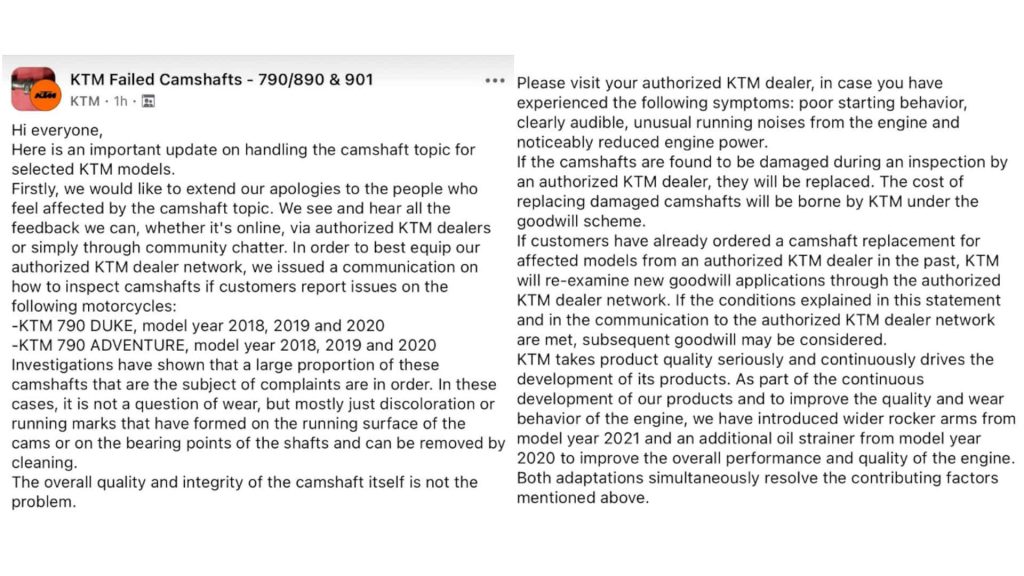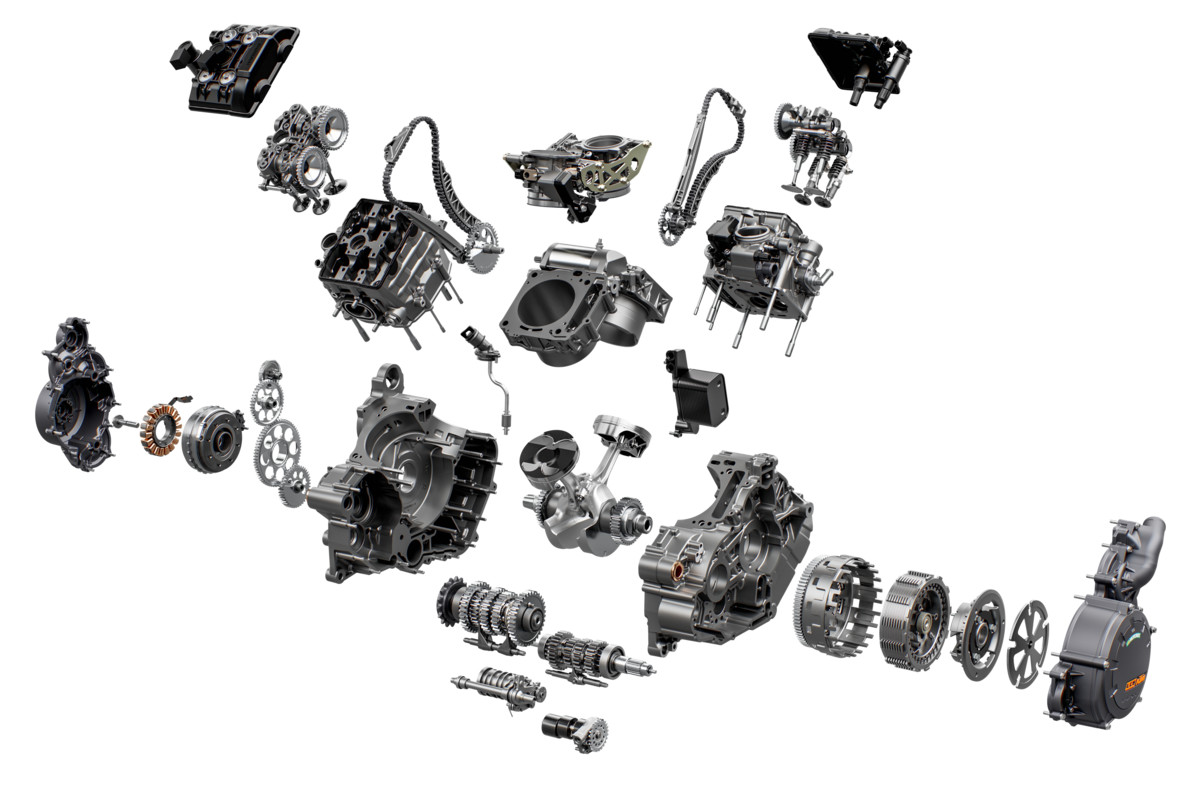Motorcycling enthusiasts share a deep connection with their bikes, cherishing every ride and valuing reliability. Therefore, it is particularly distressing when mechanical failures occur, especially when the fault lies not with the rider but with the manufacturer.
This is a sentiment my friend recently experienced with my Yamaha MT-10, a bike chosen for its reputed durability. However, it is not just Yamaha owners facing these issues.
KTM, another revered brand, has also been plagued with significant mechanical problems, specifically failed camshafts in its LC8C engines.
Understanding the Camshaft Issue
KTM’s LC8C engines, found in models like the 790 Adventure S, have faced widespread reports of camshaft failures. Owners have described symptoms such as unusual engine noises, poor starting behavior, and a noticeable drop in power.
These issues have not only tarnished KTM’s reputation but have also led to significant inconvenience and financial strain for many riders.
The Scale of the Problem
The problem is not isolated. A Facebook group named “KTM Failed Camshafts – 790/890 & 901” has garnered 8,500 members, indicating the widespread nature of this issue.
While not all members may have experienced camshaft failures, the large number of affected individuals has certainly caught KTM’s attention.
The brand’s delayed response and initial reluctance to acknowledge the problem have exacerbated customer frustration.
A Personal Account
From a personal perspective, I have witnessed this issue firsthand through two friends who own KTM 790 Adventure S models. One incident occurred in 2022, two years before KTM publicly acknowledged the camshaft issue.
My friend, whose identity I will keep anonymous, experienced a sudden loss of power and a metallic rattling noise from the engine. Despite taking the bike to an authorized KTM dealer, the warranty claim was denied because he had performed oil changes outside the official dealer network.
KTM’s Delayed Acknowledgment
KTM’s official response came on July 18, 2024, when the company issued a statement on Facebook. The post started with an apology, acknowledging the camshaft issue and promising to cover the cost of repairs under a goodwill scheme.
Additionally, KTM committed to compensating owners who had previously paid for camshaft replacements out of pocket. This move was a significant step forward, yet many believe it should have come much sooner.
Customer Reactions
Despite KTM’s efforts to address the issue, customer reactions have been mixed. Comments in the Facebook group highlight ongoing concerns about camshaft failures in newer models, including the 890 and Husky Norden 901.
These reports suggest that the problem persists, undermining KTM’s assurances and leaving many customers dissatisfied.
The Impact on KTM’s Reputation
KTM’s reputation has undoubtedly suffered due to this issue. Known for its high-performance and reliable motorcycles, the brand’s handling of the camshaft crisis has led to a loss of trust among its customer base.
For a company that prides itself on engineering excellence, this situation has been a significant blow.

The Broader Implications
This issue raises broader questions about manufacturer responsibility and customer service in the motorcycle industry. When mechanical failures occur, especially those affecting safety and performance, manufacturers must respond swiftly and transparently.
Delays and warranty denials not only frustrate customers but also damage the brand’s reputation.
Moving Forward: What KTM Needs to Do
To regain customer trust, KTM must take several critical steps. Firstly, the company should expand its recall program to include all potentially affected models, ensuring that no rider is left without support.
Secondly, KTM must improve its communication with customers, providing regular updates and transparent information about the steps being taken to resolve the issue.
A Long Road Ahead
Rebuilding trust will not be easy for KTM. The brand must demonstrate a sustained commitment to quality and customer satisfaction. This includes addressing not only the current camshaft issue but also ensuring that similar problems do not arise in the future.
Conclusion
The camshaft crisis has been a challenging chapter for KTM and its customers. While the company’s recent efforts to address the issue are a positive step, they come after years of customer frustration and financial strain.
Moving forward, KTM must prioritize transparency, customer service, and engineering excellence to restore its reputation and regain the trust of its loyal riders.





































